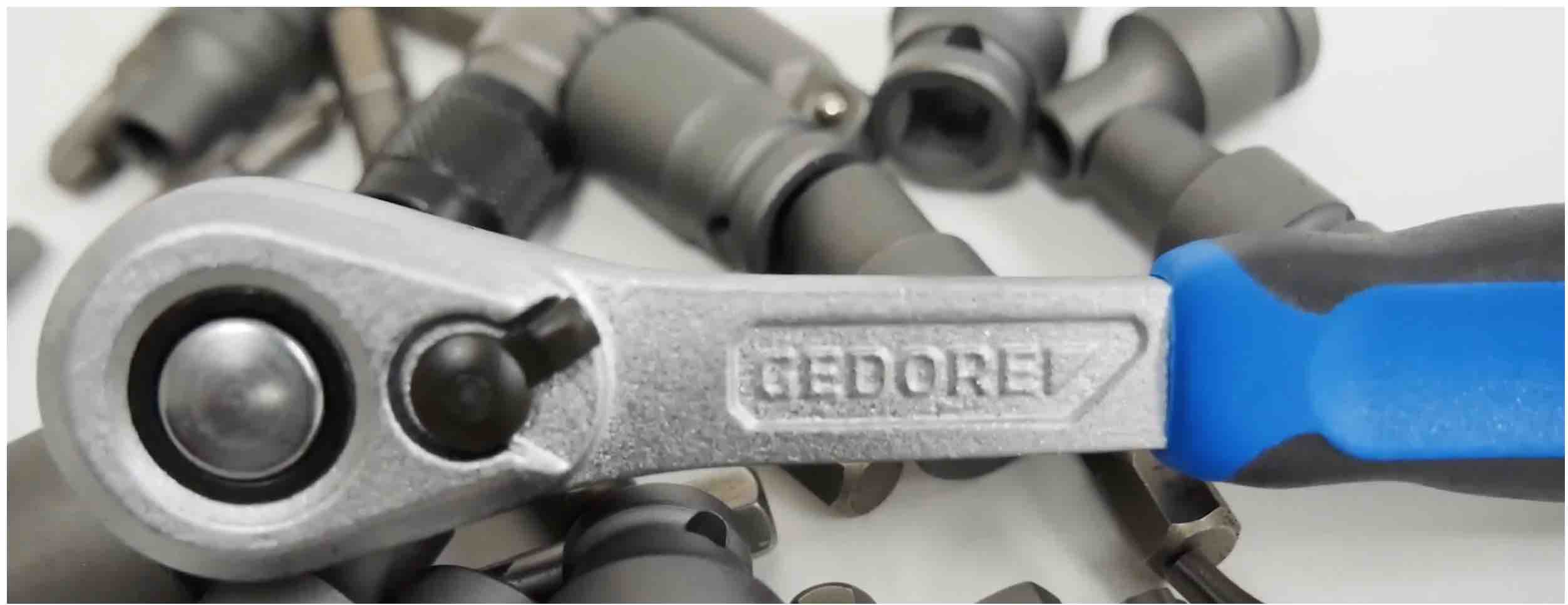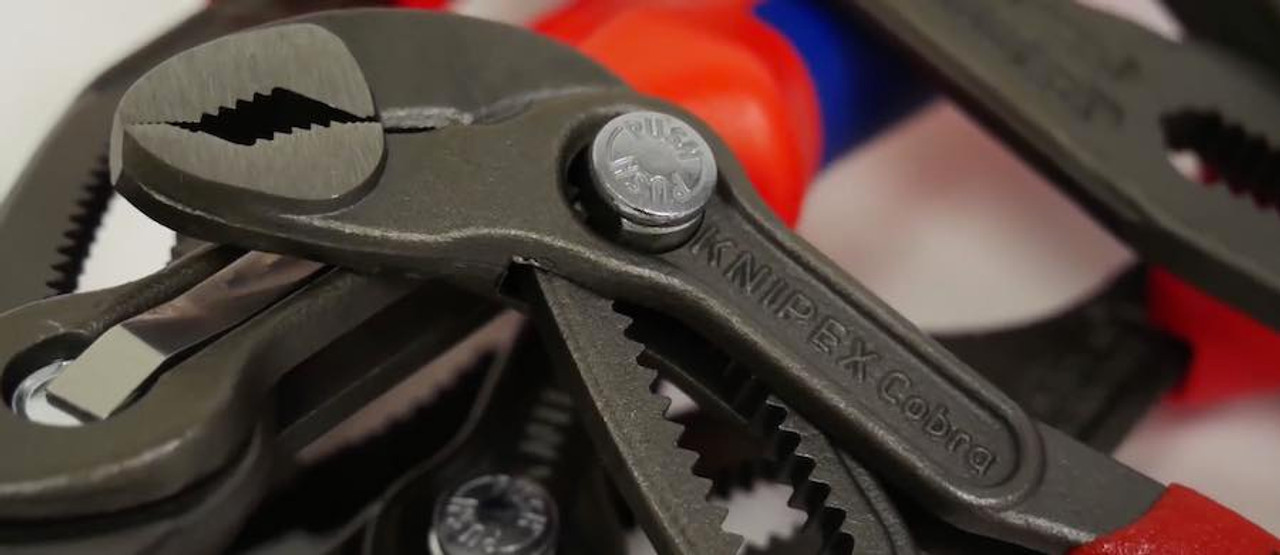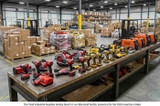Introduction to Hand Tools: Definition, Importance, and Classifications
Introduction to Hand Tools: Definition, Importance, and Classifications
Humans have used hand tools for thousands of years to complete various tasks, ranging from crafting and building to farming and hunting. Today, hand tools remain an essential component of any toolkit, providing the user with the ability to perform a wide range of tasks with accuracy and precision. This article will give an overview of hand tools, including their definition, importance, and classifications. We will also explore the different types of hand tools, their functions, and the materials used to make them. Whether you are a DIY enthusiast or a professional tradesperson, understanding the basics of hand tools is essential for completing tasks efficiently and effectively.
Hand tools are powered by hand rather than by electricity or other external power sources. They are widely used in many industries, including construction, automotive, and woodworking, and are essential for completing tasks and projects with precision and accuracy.
Key Takeaway: The Enduring Importance of Hand Tools
Hand tools remain essential in our increasingly mechanized world, offering unparalleled precision, versatility, and reliability across various industries and DIY projects. Despite the rise of power tools, hand tools provide unique advantages:
- Precision: Offer greater control for detailed work
- Versatility: Can be used in diverse situations, including where power isn't available
- Cost-effectiveness: Generally more affordable and have lower maintenance costs
- Skill development: Enhance craftsmanship and manual dexterity
- Reliability: Less prone to malfunction compared to power tools
- Portability: Easily transported to any job site
- Safety: Often safer to use, especially for beginners
Understanding the classifications and proper use of hand tools is crucial for both professionals and DIY enthusiasts. By mastering these timeless implements, you can tackle a wide range of projects with confidence, precision, and efficiency
What are Hand Tools?
Hand toolsare powered manually rather than by electricity or other external power sources. They are used for various applications, including construction, woodworking, metalworking, automotive repair, and many others. Hand tools can be made from multiple materials, including steel, aluminum, plastic, and wood. Hand tools are an essential part of any DIY project or repair work. They are manually powered tools that have been used for centuries and continue to be used in modern times for various applications. Hand tools are cost-effective, reliable, and easy to use, making them an attractive option for people of all skill levels. previously people give less attention to hand tools and why it continues to be a great tool for work these days because of the discovery of air powered and electric or battery powered tools, lets not ignore these century-old workhorse that helped civilisation.
Importance of Hand Tools
Hand tools have many advantages over power tools even from user review perspective. They are cost-effective, easy to use, and require very little maintenance. Also, hand tools do not rely on electricity or batteries, making them reliable in situations where power is unavailable. They are also portable, making them ideal for use in remote or outdoor environments. Furthermore, hand tools can be used by people of all skill levels, making them accessible to everyone. Using hand tools provides a sense of satisfaction and pride, as the results are often a product of one's hard work and skills.
Hand tools are essential for any DIY project or repair work. They are cost-effective, easy to use, and require very little maintenance. Hand tools do not rely on electricity or batteries, which makes them reliable when power is unavailable. Using hand tools provides a sense of satisfaction and pride, making them a valuable addition to any toolbox. The importance of hand tools cannot be overstated. They offer several benefits over power tools, such as portability, versatility, and affordability. Additionally, hand tools require less maintenance, are easier to handle and can be used in areas where power tools could be more practical.
There are several classifications of hand tools, including cutting tools, holding tools, striking tools, measuring and marking tools, fastening tools, and layout tools. Each type has its own set of tools and functions designed for specific tasks and projects.
Descriptions of Hand tools types
Cutting tools are used for cutting, shaping, and removing material. They include tools such as saws, scissors, and knives. Holding tools are used for holding, gripping, and clamping materials. They have tools such as pliers, clamps, and vises. Striking tools are used for hitting, striking, and driving objects. They include tools such as hammers, mallets, and chisels. Next, we discuss measuring tools and marking tools. Measuring and marking tools are used for measuring and marking materials. They include tools such as rulers, squares, and levels. Fastening tools are used for attaching and joining materials. They have tools such as screwdrivers, wrenches, and pliers.
Layout tools are used for marking and measuring materials for accurate cuts and joints. They include tools such as compasses, protractors, and marking gauges.
The article explores the details of classifications, uses, and examples of hand tools, hang on and enjoy the learning and exposure experiences in this well-researched article.
Classification of hand tools
1. Cutting Tools: Definition, Types, Examples, and How to Use Them
Cutting tools are hand tools used for cutting, shaping, and removing material. They are essential for many industries, including woodworking, metalworking, and construction. In this guide, we'll discuss the different types of cutting tools, their specific functions, and how to use them. Some of the best use cases and benefits have been explored in online forum like Garage Journal
Definition of Cutting Tools
Cutting tools are hand tools that are designed to cut through various materials. They are often made of steel or other durable materials and can be sharpened to maintain their cutting edge. Cutting tools come in various shapes and sizes and are designed to cut through different materials.
Types of Cutting Tools
There are several cutting tools, each with its specific function. Some of the most common types of cutting tools include:
- Saws - Used for cutting through wood, metal, and other materials, saws come in different shapes and sizes. Examples include handsaws, hacksaws, and jigsaws.
- Knives - Used for cutting through various materials, knives come in different shapes and sizes. Examples include utility knives, pocket knives, and kitchen knives.
- Scissors - Used for cutting through various materials such as paper, fabric, and hair, scissors come in different shapes and sizes. Examples include household scissors, sewing scissors, and hair scissors.
- Shears - Used for cutting through thicker materials such as metal or plastic, shears come in different shapes and sizes. Examples include aviation snips, tin snips, and wire cutters.
- Rotary Cutters - Used for cutting through fabrics, rotary cutters come in different shapes and sizes. Examples include straight blades and curved blades.
Examples of Cutting Tools
Some examples of cutting tools include:
- Saw - used for cutting through wood, metal, and other materials.
- Box Cutter - used for opening boxes or cutting through materials like plastic and tape.
- Pinking Shears - used for cutting fabric with a zigzag edge, which helps prevent fraying.
- Hacksaw - used for cutting through metal pipes or rods.

How to Use Cutting Tools
Using cutting tools requires proper technique and safety precautions. Here are some general tips on how to use cutting tools:
- Always wear protective gear, such as gloves or safety glasses.
- Please make sure the cutting tool is sharp before using it.
- Use the proper cutting tool for the material you're cutting.
- Make sure the material is properly secured before cutting it.
- Keep the cutting tool away from your body and other people.
Cutting tools are essential hand tools that are used for cutting, shaping, and removing materials. They come in different shapes and sizes and are designed for specific tasks. By selecting the right cutting tool and using it properly, you can ensure accurate cuts and quality work. Always follow safety precautions when using cutting tools to prevent injury.
2. Holding Tools: The Essential Classification of Hand Tools
Holding tools are an essential classification of hand tools used to hold or clamp materials in place while being worked with. They are used in various applications, including woodworking, metalworking, and construction.
What are Holding Tools?
Holding tools are hand tools designed to hold or clamp materials in place while they are being worked on. Holding tools are essential for ensuring accuracy and precision in a variety of tasks, including drilling, sawing, and sanding. They come in many different shapes and sizes and can be used for a wide range of applications.
Different Types of Holding Tools
There are many different holding tools, each with its specific function. Some of the most common types of holding tools include pliers, clamps, and vices. Pliers are used for gripping and holding small objects or materials, while clamps hold larger materials in place. Vices are used to securely hold materials in place while being worked on.

How are Holding Tools Used?
Holding tools are used in various applications, including woodworking, metalworking, and construction. In woodworking, holding tools are used to hold materials in place while cutting, shaping, or sanding. In metalworking, holding tools are used to hold materials in place while they are being drilled, punched, or welded. In construction, holding tools are used to hold materials in place while assembled or installed.
Holding tools are an essential classification of hand tools that are used to hold or clamp materials in place while they are being worked on. Holding tools are crucial for ensuring accuracy and precision in various tasks, making them a valuable addition to any toolbox. They come in many different shapes and sizes and can be used for a wide range of applications.
3. Striking Tools: The Powerful Type of Hand Tools
Striking tools are an essential type of hand tool that are used to apply force to materials, typically to drive nails or break up concrete. They are used in various applications, including woodworking, metalworking, construction, and automotive repair.
What are Striking Tools?
Striking tools are hand tools that are designed to apply force to materials. They work by using the energy from a swinging motion to transfer force to the material being struck. Striking tools are essential for tasks that require force to be applied quickly and precisely. Striking tools come in many different shapes and sizes, and they can be used for a wide range of applications.
Different Types of Striking Tools

There are many types of striking tools, each with its specific function. The most common striking tools are hammers, mallets, and sledges. Hammers are used to driving nails or to break apart materials. Mallets are used for tasks that require a gentler touch, such as driving chisels. Sledges are used for heavy-duty jobs, such as breaking up concrete or rocks.
How are Striking Tools Used?
Striking tools are used in various applications, including woodworking, metalworking, construction, and automotive repair. In woodworking, striking tools are used to drive nails or to break apart materials. In metalworking, striking tools are used to shape metal or to remove it. In construction, striking tools are used to break up concrete or to drive stakes into the ground. In automotive repair, striking tools are used to remove and install parts.
Striking tools are an essential type of hand tool that is used to apply force to materials. Striking tools are essential for tasks that require force to be applied quickly and precisely, making them a valuable addition to any toolbox. They come in many different shapes and sizes and can be used for a wide range of applications.
4. Measuring and Marking Tools: The Accurate Type of Hand Tools
Measuring and marking tools are essential types of hand tools used to measure and mark materials to ensure accuracy and precision. They are used in various applications, including woodworking, metalworking, construction, and engineering.
What are Measuring and Marking Tools?
Measuring and marking tools are hand tools designed to measure and mark materials to ensure accuracy and precision. They come in many different shapes and sizes and can be used for a wide range of applications. Measuring and marking tools are essential for ensuring accuracy and precision in various tasks, including cutting, drilling, and sawing.
Different Types of Measuring and Marking Tools
There are many different measuring and marking tools, each with its specific function. Some of the most common measuring and marking tools include rulers, levels, squares, and tape measures. Rulers are used to measuring distances, levels are used to ensure that surfaces are flat or level, squares are used to ensure that angles are precise, and tape measures are used to measure distances over longer lengths.
How are Measuring and Marking Tools Used?
Measuring and marking tools are used in various applications, including woodworking, metalworking, construction, and engineering. In woodworking, Measuring and marking tools are used to ensure that materials are cut to the correct size and shape. In metalworking, measuring and marking tools ensure that materials are drilled and cut precisely. In construction, Measuring and marking tools are used to ensure that materials are installed correctly. In engineering, measuring and marking tools are used to ensure that machines are built to precise specifications.
Measuring and marking tools are essential types of hand tools used to measure and mark materials to ensure accuracy and precision. They come in many different shapes and sizes and can be used for a wide range of applications. Measuring and marking tools are essential for ensuring accuracy and precision in various tasks, making them a valuable addition to any toolbox.
5. Fastening Tools: The Essential Types of Hand Tools
Fastening tools are essential types of hand tools that are used in a variety of applications. Fastening tools are used to join or fasten materials together, while layout tools are used to ensure that materials are cut, drilled, and installed accurately.
What are Fastening?
Fastening tools are hand tools that join or fasten materials together. They come in many different shapes and sizes and can be used for a wide range of applications.
Different Types of Fastening Tools
There are many different types of fastening tools, each with its specific function. Some of the most common fastening tools include screwdrivers, wrenches, and pliers. Screwdrivers are used to turn screws, while wrenches are used to turn nuts and bolts. Pliers are used to gripping and manipulate materials.
How are Fastening Tools?
Fastening tools are used in various applications, including woodworking, metalworking, construction, and automotive repair. In woodworking, fastening and layout tools are used to join and fasten materials together and ensure that materials are cut and drilled accurately. In metalworking, fastening and layout tools are used to fasten (attach)materials together and ensure that materials are cut and drilled accurately. In construction such as shipbuilding, fastening and layout tools are used to join and fasten materials together and ensure that materials are installed accurately. In automotive repair, fastening and layout tools are used to join and fasten parts together and ensure that parts are installed accurately.
6. Layout Tools: The Precise Type of Hand Tools
Layout tools are an essential type of hand tool used to ensure that materials are cut, drilled, and installed accurately. They are used in various applications, including woodworking, metalworking, construction, and engineering.
What are Layout Tools?
Layout tools are hand tools that ensure that materials are cut, drilled, and installed accurately. They come in many different shapes and sizes and can be used for a wide range of applications. Layout tools are essential for ensuring accuracy and precision in various tasks, including cutting, drilling, and sawing.
Different Types of Layout Tools
There are many different layout tools, each with its specific function. Some of the most common types of layout tools include squares, levels, and marking tools. Squares are used to ensure that angles are precise, while levels are used to ensure that surfaces are flat or level. Marking tools are used to mark materials for cutting or drilling.
How are Layout Tools Used?
Layout tools are used in various applications, including woodworking, metalworking, construction, and engineering. In woodworking, layout tools ensure that materials are cut and drilled accurately, such as when cutting pieces for a furniture project. In metalworking, layout tools are used to ensure that materials are cut and drilled precisely, such as when creating parts for a machine. In construction, layout tools ensure that materials are installed accurately, such as when installing windows or doors. In engineering, layout tools ensure that machines are built to precise specifications.
Layout tools are essential hand tools used to ensure accuracy and precision in various tasks. Layout tools ensure that materials are cut, drilled, and installed accurately, making them valuable to any toolbox. They come in many different shapes and sizes and can be used for a wide range of applications.
Hand tools are a crucial component of any toolbox, allowing the user to perform a wide range of tasks with accuracy and precision. From striking and fastening tools to measuring and marking tools and holding and layout tools, each classification offers a unique function and benefits that can help accomplish specific tasks. The importance of hand tools lies in their versatility, accessibility, and cost-effectiveness, as they do not require any power source to function. Overall, hand tools are an essential investment for any individual or professional looking to complete tasks with precision, efficiency, and effectiveness.
Comprehensive Guide to Selecting the Right Hand Tools
Choosing the right hand tools is crucial for efficiency, safety, and job quality. Here's a guide to help you make informed decisions:
- Assess Your Needs
- Identify the types of projects you typically undertake
- Consider the frequency of tool use (occasional DIY vs. professional use)
- Quality Considerations
- Look for tools made from high-quality materials (e.g., drop-forged steel for durability)
- Check for comfortable, ergonomic grips to reduce fatigue during extended use
- Consider warranties and brand reputation
- Essential Tools for Different Trades
- Carpentry: Chisels, hand saws, planes, measuring tools
- Plumbing: Pipe wrenches, pliers, basin wrench, tube cutter
- Electrical: Wire strippers, voltage tester, insulated screwdrivers
- Automotive: Socket set, torque wrench, jack stands
- Budget Considerations
- Invest in high-quality versions of frequently used tools
- Consider mid-range options for less frequently used items
- Look for tool sets that offer good value for multiple pieces
- Ergonomics and Comfort
- Choose tools that feel comfortable in your hand
- Look for features like cushioned grips or spring-loaded handles for repetitive tasks
- Versatility
- Opt for adjustable tools (e.g., adjustable wrench) for greater versatility
- Consider multi-tools for portability and space-saving
- Maintenance and Care
- Select tools that are easy to clean and maintain
- Consider the availability of replacement parts
- Safety Features
- Look for tools with built-in safety features (e.g., non-slip grips, protective guards)
- Ensure the tool is appropriate for the environment (e.g., spark-resistant tools for flammable areas)
- Brand and Warranty
- Research reputable brands known for quality
- Check warranty terms, especially for more expensive tools
- User Reviews and Recommendations
- Read user reviews and professional recommendations
- Consult with experienced professionals in your field
By considering these factors, you can build a hand tool collection that meets your specific needs, ensures safety, and provides long-lasting value. Remember, the right tools not only make your work easier but also contribute to better results and increased job satisfaction.
Essential Safety Guide for Hand Tools
Proper use of hand tools is crucial for both efficiency and safety. Follow these guidelines to ensure safe operation:
- Wear Appropriate Personal Protective Equipment (PPE)
- Safety glasses to protect eyes from debris
- Work gloves to improve grip and protect hands
- Steel-toed boots when working with heavy tools or materials
- Use the Right Tool for the Job
- Never substitute tools; use screwdrivers as pry bars or pliers as hammers
- Ensure the tool is the correct size for the task
- Maintain Your Tools
- Keep cutting tools sharp; dull tools require more force and are more likely to slip
- Replace or repair damaged tools immediately
- Clean tools after each use to prevent rust and ensure proper function
- Proper Storage
- Store tools in a dry, secure location
- Use toolboxes, tool belts, or wall-mounted storage to keep tools organized
- Never carry sharp tools in your pockets
- Work Area Safety
- Ensure adequate lighting in your work area
- Keep your workspace clean and free of clutter
- Secure work pieces with clamps or a vise when necessary
- Proper Technique
- Always cut away from your body
- Maintain a stable stance and good balance when using tools
- Don't apply excessive force; if a tool requires too much effort, it may be the wrong tool for the job
- Tool-Specific Safety
- For striking tools: Ensure the striking face is in good condition and the handle is secure
- For cutting tools: Keep blades sharp and use with controlled, deliberate motions
- For measuring tools: Be cautious with sharp edges on squares and levels
- Electrical Safety
- Use insulated tools when working with electricity
- Never use metal tools near live electrical circuits
By following these safety guidelines, you can significantly reduce the risk of injury and ensure a safer working environment when using hand tools.
Call for actions
Are you in the market for hand tools and need top quality tools?
Buy from Tend Industrial Supplies Online Shop
Frequently Asked Questions About Hand Tools
- Q: What are the essential hand tools every DIYer should own? A: Essential hand tools for DIYers include a hammer, screwdrivers (flathead and Phillips), pliers, adjustable wrench, measuring tape, utility knife, and a level. These versatile tools can handle a wide range of household projects and repairs.
- Q: How do I maintain my hand tools to ensure their longevity? A: To maintain hand tools, clean them after each use, store them in a dry place, oil metal parts to prevent rust, sharpen cutting edges regularly, and inspect them for damage before use. Proper storage, such as using a toolbox or pegboard, also helps protect tools.
- Q: Are expensive hand tools always better than cheaper ones? A: While expensive tools often offer better quality and durability, mid-range tools can provide excellent value for most users. Professional-grade tools are worth the investment for frequent use or demanding jobs, but hobbyists can often get by with more affordable options that still meet quality standards.
- Q: Can hand tools be safely used for electrical work? A: Some hand tools are specifically designed for electrical work and include insulation to protect against electric shock. Always use tools rated for electrical work and wear appropriate safety gear. For complex electrical tasks, it's best to consult or hire a professional electrician.
- Q: How do I choose the right size hand tool for a job? A: Choosing the right size tool depends on the specific task and materials you're working with. For example, select a screwdriver that fits the screw head precisely, or choose pliers that can comfortably grip the object you're working on. Many tools come in sets with various sizes to ensure you have the right option for different jobs.
Readers like..










